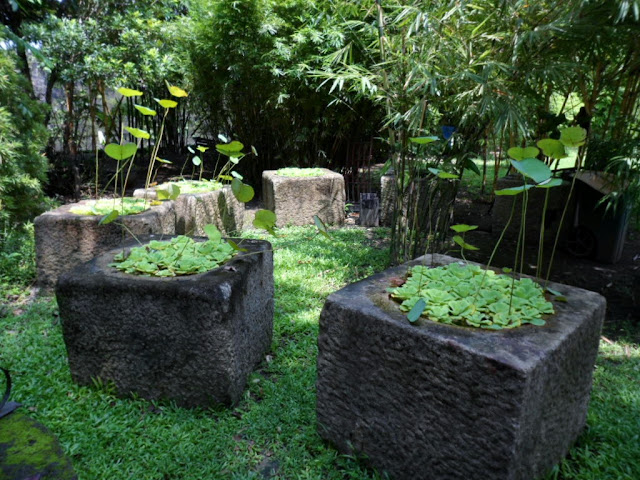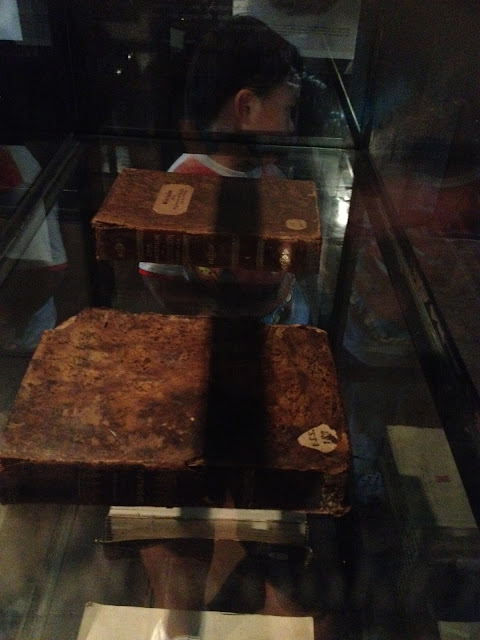Intramuros The "Walled City".
At the southern tail of the Pasig River lies Intramuros, capital Manila’s oldest district built in the 16th century by the Spaniards. Intramuros is Latin for “walled city,” since the area is enclosed by thick, high walls with moats and a fortress. Inside Intramuros is a golf course, a medieval baroque church, Manila Cathedral; the High Renaissance-style San Agustin Church, and the garrison Fort Santiago, which contains a light and sound museum and the former prison of the national hero, Dr. Jose Rizal.
Fort Santiago
Originally built in 1571 for Spanish conquistador Miguel Lopez de Legazpi, Fort Santiago or Fuerza de Santiago is the oldest Spanish fortress in the Philippines and one of the major attractions inside Intramuros in capital Manila.
History of the Fort
The fort used to be the site of the kingdom of Rajah Suleiman, the Muslim king who ruled during the pre-Hispanic Manila. It was named after Spanish patron saint Santiago Matamoros (James, Slayer of the Moors). It was a main port for the Manila Galleon, a spice trade between Europe and the Americas that lasted for 333 years.The fort functioned as the military base of the Spanish, American, British, and Japanese regimes. It was also the site of several major battles in Philippine history, including the Battle of Manila. During WWII, the Japanese tortured killed hundreds of people inside the fort, then known as Kempeitai. The Americans restored the fort into a public park in 1950.
Here are some of the pictures I took outside of the Fort.
 These are floating lily pads in concrete blocks.
These are floating lily pads in concrete blocks. These are the quarters that the soldiers lived in. They worked at the fort. These quarter were outside of the fort.
Pictures of the Fort.
A guard standing on the last steps of a local hero, Dr. Jose Rizal.
The Dungeon

A Guard Tower
Baluarte De Santa Barbara
Baluarte de Santa Barbara began in 1593 as a wooden
platform that protected the entrance to the Pasig River. It was rebuilt in stone
with storage vaults and a powder magazine in 1599. Renovations continued into
the 18th century, including the addition of a semi-circular platform
(Media Naranja).
Stories of prisoners drowning in the dungeons during high
tide abound. However, archaeological evidence proves otherwise. The dungeons,
which were the former storage vaults, were built way above the river level and
it would be impossible for the waters to flood the chambers even during high
tide.
The chambers of the powder magazine were used as prison
cells for hundreds of guerillas and civilians arrested during World War II.
Their remains were discovered after the Battle of Manila. The white marble cross
marks the common grave of these victims.



Walkway down to the cells.
José Rizal - Local Hero
1861-1896
José Rizal, son of a Filipino father and a Chinese mother, came from a wealthy family. Despite his family's wealth, they suffered discrimination because neither parent was born in the peninsula. Rizal studied at the Ateneo, a private high school, and then to the University of St. Thomas in Manila. He did his post graduate work at the University of Madrid in 1882. For the next five years, he wandered through Europe discussing politics wherever he went. In 1886, he studied medicine at the University of Heidelberg and wrote his classic novel Noli me Tangere, which condemned the Catholic Church in the Philippines for its promotion of Spanish colonialism. Immediately upon its publication, he became a target for the police who even shadowed him when he returned to the Philippines in 1887. He left his country shortly thereafter to return to Spain where he wrote a second novel, El Filibusterismo (1891), and many articles in his support of Filipino nationalism and his crusade to include representatives from his homeland in the Spanish Cortes.He returned to Manila in 1892 and created the Liga Filipina, a political group that called for peace change for the islands. Nevertheless, Spanish officials were displeased and exiled Rizal to the island of Mindanao. During his four years there, he practiced medicine, taught students, and collected local examples of flora and fauna while recording his discoveries. Even though he lost touched with others who were working for Filipino independence, he quickly denounced the movement when it became violent and revolutionary. After Andrés Bonifacio issued the Grito de Balintawak in 1896, Rizal was arrested, convicted of sedition, and executed by firing squad on December 30, 1896. Following the revolution, Rizal was made a saint by many religious cults while the United States authorities seized on his non-violent stance and emphasized his views on Filipino nationalism rather than those of the more action-oriented Emilio Aguinaldo and Andrés Bonifacio.
Joey and his name sake
Memorbilia of Jose Rizal's.


His "Contiplation room before he was put to death by firing squad.
It is hard to see him in these pictures but there was a figure in the back of him in his last moments.

These footprints were at the fort to mark the path of his final walk to the firing squad.
.JPG)
































.JPG)







No comments:
Post a Comment